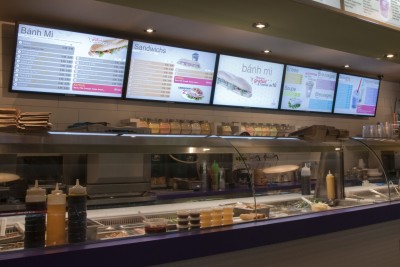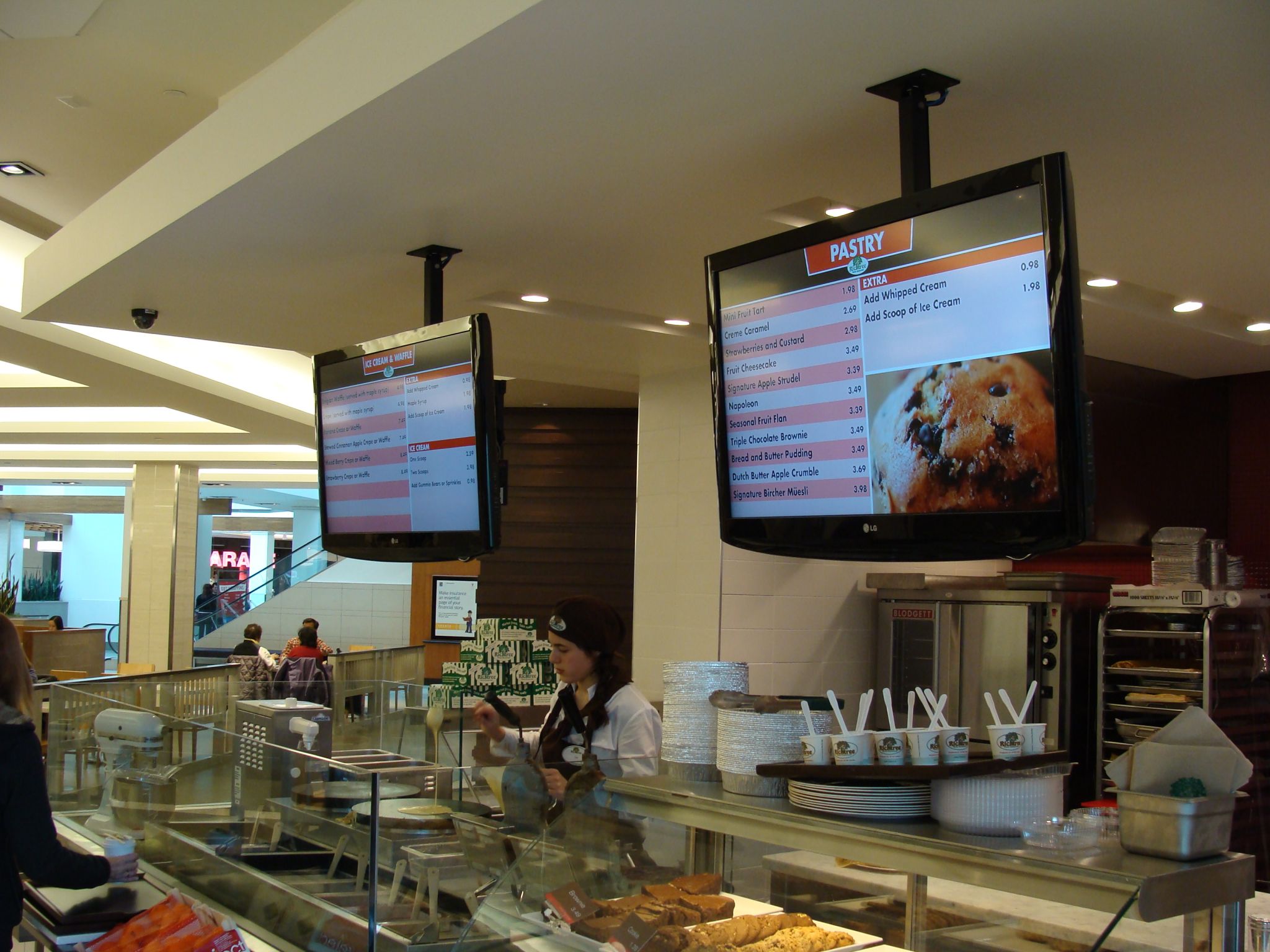By Lyle Bunn
Food services represent a high-growth sector for digital signage, including promotional boards, digital menu screens and self-order kiosks installed in quick-service restaurants (QSRs), fast casual dining, food courts, cafeterias and dining halls. Digital signage has offered the opportunity for food-service providers and their suppliers to modernize facilities, reduce promotional costs and encourage upselling to increase revenue, among other goals.
“The role of digital signage within the QSR industry is evolving rapidly,” says Chris Riegel, founder and CEO of digital signage software and appliance provider Stratacache, “and digital menu boards, in particular, are proving their value in helping restaurant owners increase the profitability of their operations.”
This may be particularly important in reaching the next generation of customers. Studies by OTX Research indicate awareness levels for digital signage are especially high among 18- to 24-year-olds. Some 70 per cent of them recall digital signage they have seen within the past year and 27 per cent of them took action as a result.
Menu boards
Digital menu boards are becoming a more common sight in restaurants because they allow updated menu information to be displayed alongside mouth-watering visuals, all controlled from a central location or at a regional or local level.

Digital menu boards allow updated menu information to be displayed, including different meals throughout a single day.
“Restaurant owners are using their menu boards to maximize communication with their customers,” says Riegel. “Compared to static boards, they offer greater scheduling flexibility and animated food items have seen up to a 65 per cent increase in sales. One restaurant even saw sales double over a two-week period when promoting gift cards on its digital menu boards.”
Changing menu items at different mealtimes is called ‘dayparting.’ This practice can go beyond breakfast, lunch and dinner to promote snacks between meals and in the later evening. Further, messaging within one daypart can be used to encourage return visits at another.
Typically, three to nine dayparts are used, with a playlist prepared beforehand with a schedule for specific playback timing. A loop of content can present a number of ‘spots’ and messages in co-ordination with the menu variations throughout the day.
Promotional boards
When McDonald’s launched its McCafé beverage line in North America, the fast-food chain used both digital menu boards and promotional boards to support the new products across thousands of locations. In fact, in terms of the number of devices and locations within a single schedule, the deployment has been the largest anywhere in the world. Each franchise received a complete system, including software, screens, a media player and technical support.
Fast-casual restaurants’ waiting areas and the entranceways to food courts are among the locations where promotional digital signage can help influence customers’ decisions by displaying the day’s specials and offers. The screens are also useful for communications about community involvement and charitable contributions.
Also, unlike a menu board displayed well above a service counter, a promotional board can display Quick Response (QR) codes where customers may scan them with their mobile phones for purposes of brand interaction.






